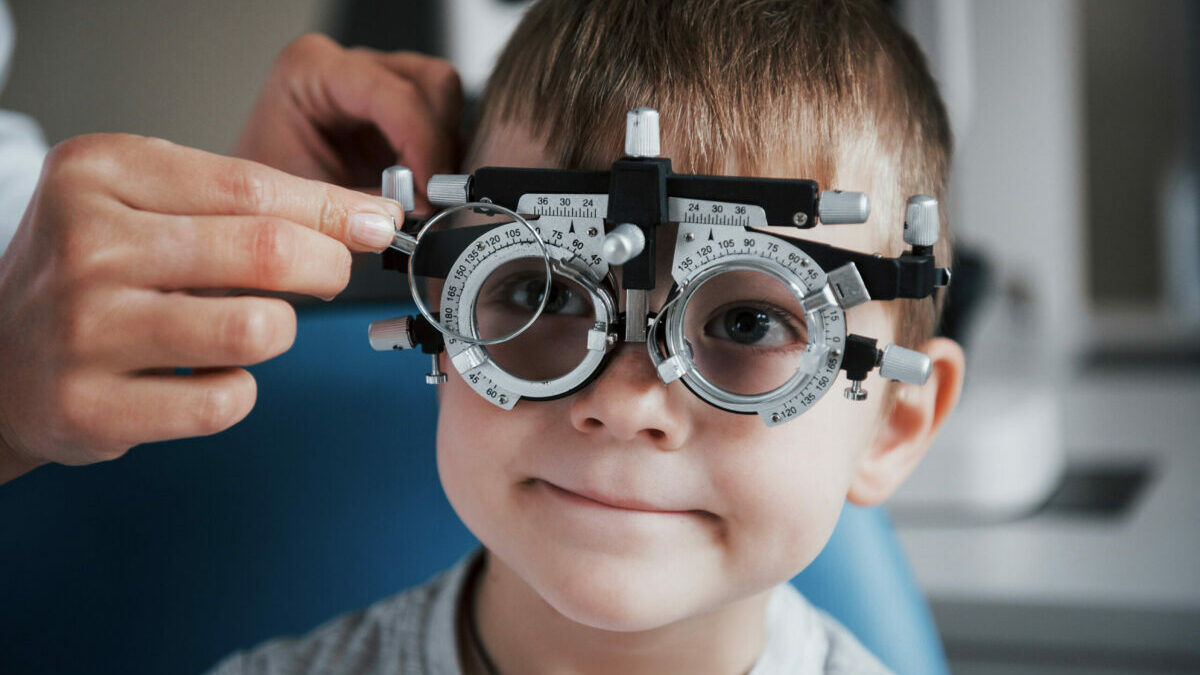Science
IMI Report on Impact of Myopia

In this article:
Authors: Padmaja Sankaridurg, Nina Tahhan, Himal Kandel, Thomas Naduvilath, Haidong Zou, Kevin D. Frick, Srinivas Marmamula, David S. Friedman, Ecosse Lamoureux, Jill Keeffe, Jeffrey J. Walline, Timothy R. Fricke, Vilas Kovai, Serge Resnikoff.
Date: April 2021
Reference: Sankaridurg P, Tahhan N, Kandel H, Naduvilath T, Zou H, Frick KD, Marmamula S, Friedman DS, Lamoureux E, Keeffe J, Walline JJ, Fricke TR, Kovai V, Resnikoff S. IMI Impact of Myopia. Invest Ophthalmol Vis Sci. 2021 Apr 28;62(5):2. (Link to open access paper)
Summary
This review analyses the burden of myopia on both individuals and society as a whole. The results demonstrate a worldwide rising prevalence of myopia and high myopia, with the prevalence of high myopia growing at a faster rate than overall myopia. This indicates a future increase in vision loss due to high myopia related complications such as myopia macular degeneration. It was estimated that from the years 2010 to 2020, myopia prevalence increased worldwide from 28.3% to 34%, an increase of about 20% from the baseline prevalence. East Asian countries have a higher prevalence of myopia and high myopia and therefore carry a major share of the global burden.
In adults, myopia results in significant losses in productivity and negatively reduces QOL. In general, people with a higher magnitude of myopia are likely to have poorer QOL, and the impact of high myopia (-10.00D) has been found to be similar to that of keratoconus. QOL is also adversely affected by the complications of myopia.
The global costs related to direct health expenditure and lost productivity due to myopia are in the range of several hundred billion dollars annually. These costs are set to rise substantially in the future due to increasing prevalence of myopia. Unless the current trajectory for the rising prevalence of myopia and high myopia is lowered, the costs will continue to grow. Significant benefits in productivity, QOL and individual and societal expenditure can be gained by managing the development and progression of myopia. This requires a collaborative approach from policy makers, government, eye care professionals and parents.
What does this mean for my practice?
Unless the current trajectory for the rising prevalence of myopia and high myopia change, the costs and burden will continue to grow. Shifting the trajectory requires a coordinated global effort.
An early and appropriate intervention by eye care practitioners mitigates the risks and consequences related to uncorrected vision. More importantly, it can reduce the risk of myopia progressing to higher levels. This has a positive impact on reducing the burden of myopia.
What do we still need to learn?
We still require a better understand the life-long impact of myopia on an individual and the cost-effectiveness of the various novel approaches in reducing the burden. Assessment of the costs and cost-effectiveness of these various interventions is in the early stages. Such research will provide individuals, governments, and other decision makers with quantifiable information that will facilitate optimal health resource allocation decisions.
Abstract
Title: IMI Impact of Myopia
Authors: Padmaja Sankaridurg, Nina Tahhan, Himal Kandel, Thomas Naduvilath, Haidong Zou, Kevin D. Frick, Srinivas Marmamula, David S. Friedman, Ecosse Lamoureux, Jill Keeffe, Jeffrey J. Walline, Timothy R. Fricke, Vilas Kovai, Serge Resnikoff
The global burden of myopia is growing. Myopia affected nearly 30% of the world population in 2020 and this number is expected to rise to 50% by 2050. This review aims to analyze the impact of myopia on individuals and society; summarizing the evidence for recent research on the prevalence of myopia and high myopia, lifetime pathological manifestations of myopia, direct health expenditure, and indirect costs such as lost productivity and reduced quality of life (QOL). The principal trends are a rising prevalence of myopia and high myopia, with a disproportionately greater increase in the prevalence of high myopia. This forecasts a future increase in vision loss due to uncorrected myopia as well as high myopia-related complications such as myopic macular degeneration. QOL is affected for those with uncorrected myopia, high myopia, or complications of high myopia. Overall the current global cost estimates related to direct health expenditure and lost productivity are in the billions. Health expenditure is greater in adults, reflecting the added costs due to myopia-related complications. Unless the current trajectory for the rising prevalence of myopia and high myopia change, the costs will continue to grow. The past few decades have seen the emergence of several novel approaches to prevent and slow myopia. Further work is needed to understand the life-long impact of myopia on an individual and the cost-effectiveness of the various novel approaches in reducing the burden.
Meet the Authors:
About Clare Maher
Clare Maher is a clinical optometrist in Sydney, Australia, and a third year Doctor of Medicine student, with a keen interest in research analysis and scientific writing.
Enormous thanks to our visionary sponsors
Myopia Profile’s growth into a world leading platform has been made possible through the support of our visionary sponsors, who share our mission to improve children’s vision care worldwide. Click on their logos to learn about how these companies are innovating and developing resources with us to support you in managing your patients with myopia.











